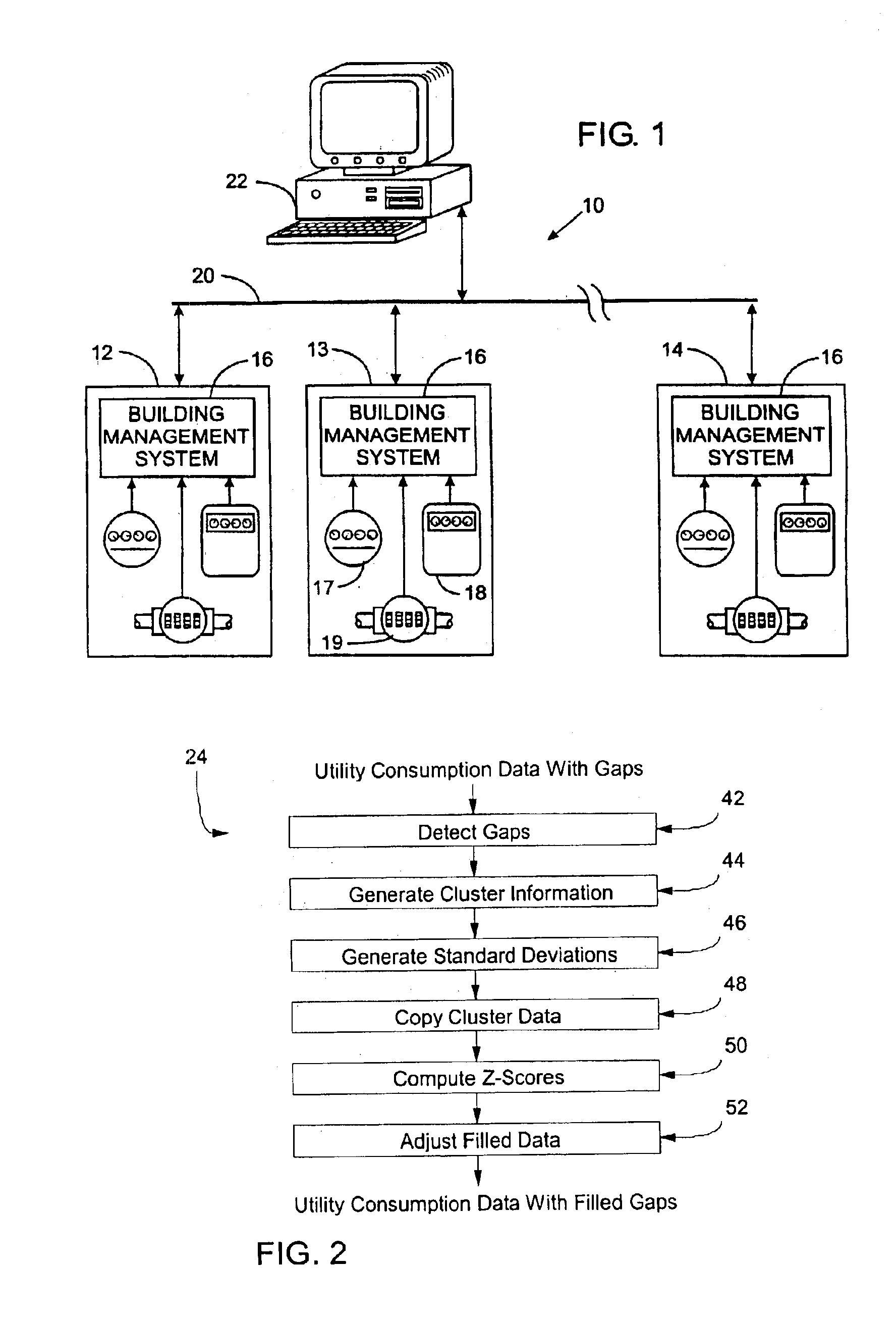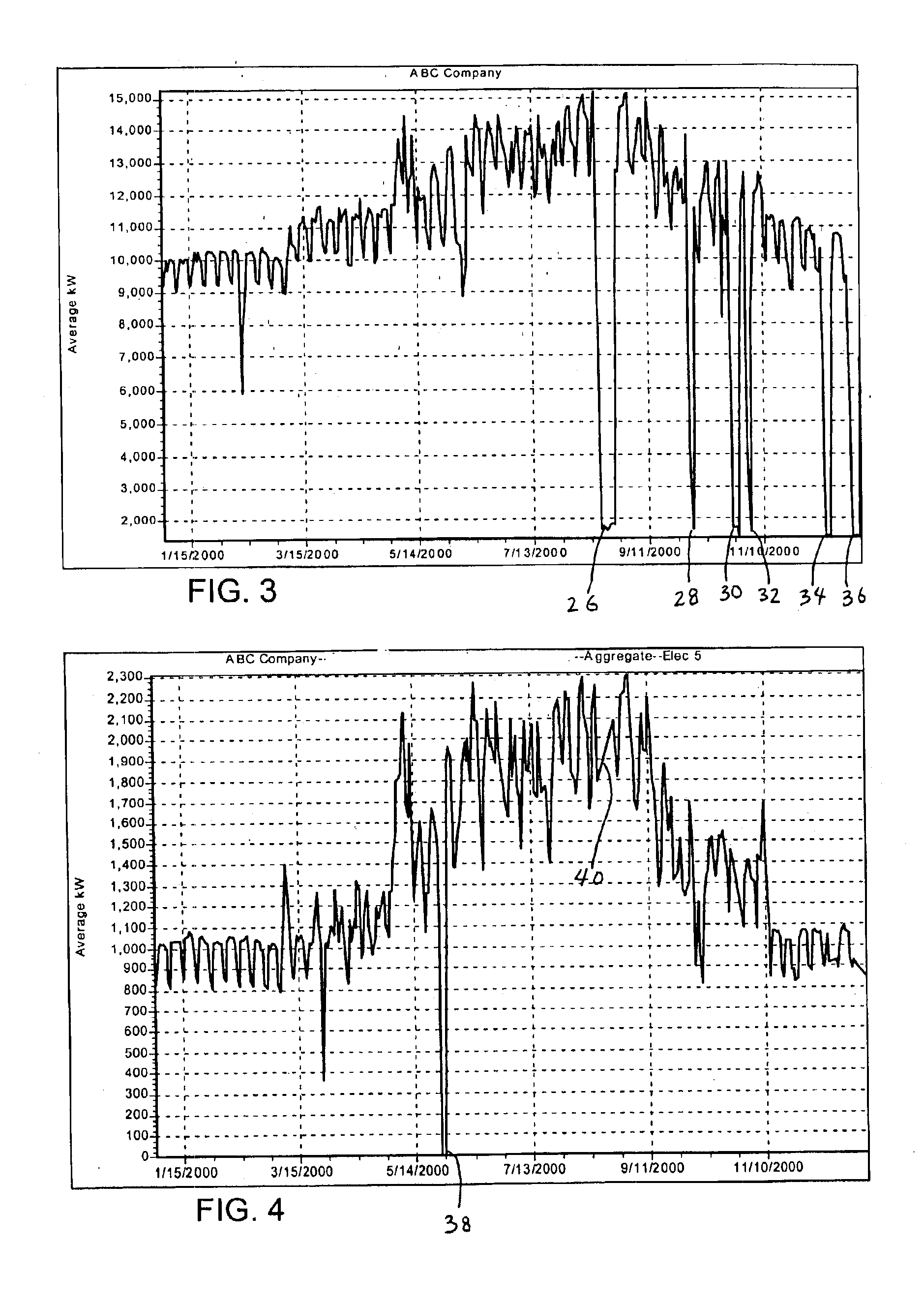System and method for filling gaps of missing data using source specified data
a technology of source specified data and data, applied in the direction of electric devices, process and machine control, force/torque/work measurement apparatus, etc., can solve the problems of large electricity consumption costs for large consumers, affecting the rate at which the service is billed during an entire month, and stiff monetary penalties
- Summary
- Abstract
- Description
- Claims
- Application Information
AI Technical Summary
Benefits of technology
Problems solved by technology
Method used
Image
Examples
Embodiment Construction
With reference to FIG. 1, a distributed facility management system 10 supervises the operation of systems in a plurality of buildings 12, 13 and 14. Each building contains its own building management system 16, which is a computer that governs the operation of various subsystems within the building. To facilitate this purpose, each building management system 16 is connected to numerous sensors positioned throughout the building to monitor consumption of different utility services at certain points of interest. For example, the building management system 16 in building 13 may be connected to a main electric meter 17, a central gas meter 18 and a main water meter 19. In addition, individual meters for electricity, gas, water and other utilities may be attached at the supply connection to specific pieces of equipment to measure their consumption. For example, water drawn into a cooling tower of an air conditioning system may be monitored, as well as the electric consumption of the pump...
PUM
| Property | Measurement | Unit |
|---|---|---|
| time | aaaaa | aaaaa |
| time | aaaaa | aaaaa |
| time series | aaaaa | aaaaa |
Abstract
Description
Claims
Application Information
 Login to View More
Login to View More - R&D
- Intellectual Property
- Life Sciences
- Materials
- Tech Scout
- Unparalleled Data Quality
- Higher Quality Content
- 60% Fewer Hallucinations
Browse by: Latest US Patents, China's latest patents, Technical Efficacy Thesaurus, Application Domain, Technology Topic, Popular Technical Reports.
© 2025 PatSnap. All rights reserved.Legal|Privacy policy|Modern Slavery Act Transparency Statement|Sitemap|About US| Contact US: help@patsnap.com



